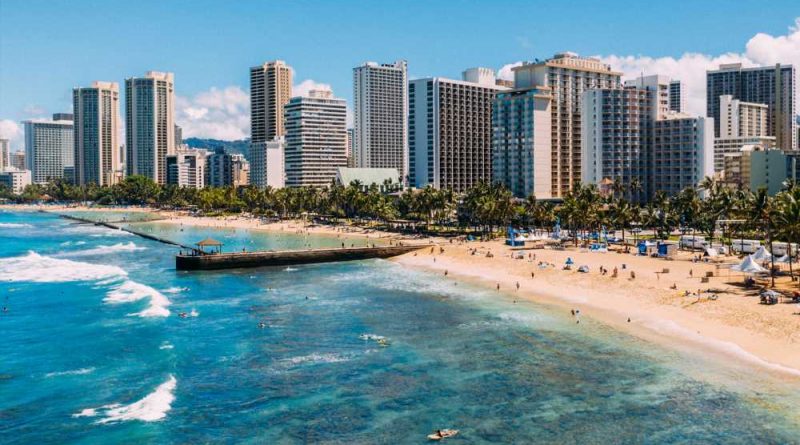Dining out on Oahu will require vaccine card
Starting Sept. 13, Oahu is requiring that patrons of bars, restaurants, museums and gyms show proof of vaccination or a negative result from a recent Covid-19 test to enter.
Oahu mayor Rick Blangiardi issued the emergency order.
The “Safe Access Oahu” program is being rolled out on Hawaii’s most populous island, which includes Honolulu and the Waikiki resort area, to combat the highest Covid-19 case rates seen in Hawaii at any time during the pandemic. The state’s hospitals are under increasing strain.
“We don’t want a lockdown,” Blangiardi said during an Aug. 30 press conference announcing the program. “I am on the record as saying that. We don’t want a lockdown. But we need to all work together to make sure we don’t have to do that, and this is a good, safe way to get it done.”
The new regulation includes several exceptions and will be evaluated after an initial trial period of 60 days. The policy does not apply to children under 12 years old. Employees at the affected businesses who are not vaccinated must show weekly proof of a negative Covid-19 test result.
Customers without proof of vaccination must present a negative Covid-19 test result taken in the previous 48 hours. Patrons going into a business for less than 15 minutes — to pick up take-out food, for example — are exempt from the requirement.
Blangiardi said he is working to balance health and public safety with business and economic needs.
Along with restaurants, museums, and gyms, the order applies to an array of other businesses, including movie theaters, bowling alleys and arcades, as well as the indoor sections of aquariums, zoos, botanical gardens and other attractions. Grocery stores and farmers markets are exempt from the policy.
More Hawaii news
- Delta variant halts Hawaii’s steady tourism rebound
- Honolulu airport’s new concourse expected to ease congestion
- Blowback from Hawaii governor’s ‘don’t come’ comment
Alcohol service must end at 10 p.m. during the 60-day period, after previously being allowed until midnight.
“Don’t stop eating in restaurants. We need you. We need the business. But more of what we need is to get through this, and so we support what the mayor is putting forward because we need an end. We need this to stop,” said Greg Maples, chairman of the Hawaii Restaurant Association, who joined Blangiardi’s press conference announcing the new regulation.
Maples encouraged people to get vaccinated and said the mayor and county worked with the association on crafting the new policy, which he acknowledged could reduce restaurant patronage when many establishments were just finding their footing again after the deep financial wounds of 2020. His hope is that new rules restore confidence in the dining public.
“We have the potential to create an environment in a restaurant where people are so comfortable that we may see more business in our dining rooms,” he said.
Roughly 63% of the state’s population has been fully vaccinated, according to the Hawaii Health Department.
The new program comes after Covid-19 cases counts rose quickly in Hawaii through the month of August due to the spread of the delta variant. Twice in one week, the state broke records for the highest number of cases reported in one day, and some hospitals have reached capacity in their intensive care units, and many are canceling elective procedures.
Once the new policy begins in mid-September, inoculated customers can present a physical copy of their vaccination card or a photo of the card on their phone.
If the situation on Oahu does not improve, Blangiardi said the next step could be mandatory vaccinations for entry into businesses.
“I really want this to come off as really more common sense and appeal in what we’re trying to do to combat this delta variant and where we are with case counts, and really for the sake of the community,” the mayor said. “This is our effort to help with community spread, to take the best step possible that we can in places where people like to go.”
Source: Read Full Article



